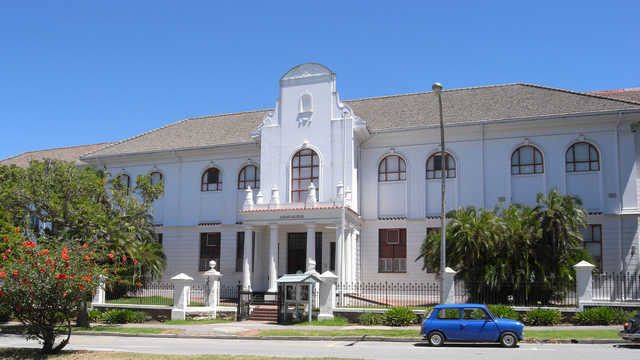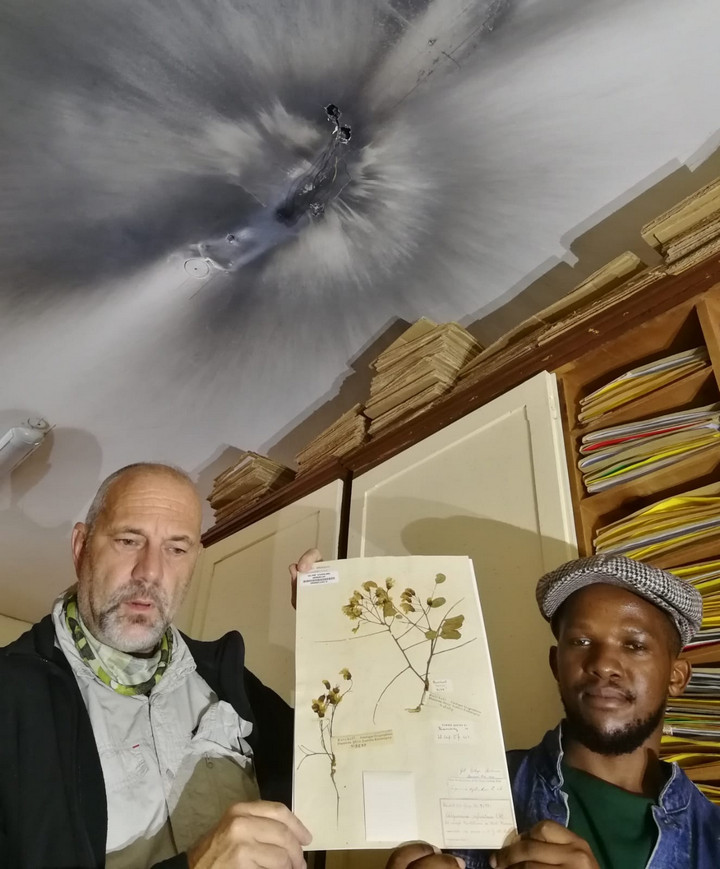
Hot on the heels of the devastating fire at the University of Cape Town narrowly missing the famous Bolus Herbarium, the Albany Museum’s Selmar Schonland Herbarium, closely associated with Rhodes University, barely escaped a devastation of its own last week.
“It’s unbelievably lucky that two of the country’s most valuable historical plant collections narrowly escaped going up in flames within the space of 15 days,” said Professor Craig Peter, Head of the Department of Botany at Rhodes University.
Last week, a fire caused by an electrical fault in the Selmar Schonland Herbarium, housed in the top floor of the Albany Museum, was extinguished minutes before it could spread and destroy the collection.
Curator Tony Dold happened to be looking at a specimen almost directly under the fire when it broke out, and it was thanks to his quick response that the collection was saved. “If I had been in my office next door, chances are the outcome would have been very different. A minute or two delay and we may very well have lost this priceless collection,” he said.
The Schonland Herbarium is a valuable historical collection of South African plant specimens and the second oldest herbarium in the country. It focuses on the flora of the Eastern Cape, the diverse botanical heartland of South Africa, where seven of the nine biomes meet. The herbarium houses over 3000 type specimens and 250 000 specimens in total.
“Type specimens are the reference against which identification of all other plants are made. Various staff in the departments of Botany, Zoology & Entomology, Environmental Science, Geography, Anthropology and others are engaged in teaching and researching plants in one way or another. This collection is crucially important for the identification of plants, understanding their distribution geographically as well as their occurrence in time. Numerous members of Rhodes University staff, postgraduates and final-year undergraduates make use of this collection. It is an integral part of teaching, learning and research at the University and beyond,” explained Prof Peter.
Furthermore, the Herbarium serves the greater Makhanda and Eastern Cape community. It is the only herbarium in the country, if not the world, that is open to public for plant identification and related information, at no cost. “The visitor’s book shows an annual visitor number of between 700 and 1000 over the last ten years. Plants support humans in all manner of ways and many people in the community make use of the resources and expertise at the Herbarium,” explained Mr Dold. The herbarium also has an ongoing schools education project that works closely with the Albany Museum education department.
According to Prof Peter, losing type specimens is considered a global catastrophe by biologists, as they are irreplaceable. “Out of our 250 000 specimens, we have been able to digitise nearly 60 000 to date, while digitising of the rest of the collection is an ongoing effort.” With the assistance of the Rhodes University Library, Rhodes University’s Information and Technology Services and the South African National Biodiversity Institute, these specimen images and the data they represent will soon be freely available online.
“Although this is an ongoing effort, we are pleased with the progress we have made so far,” said Prof Peter. “Nevertheless, the physical specimen can never be replaced by an image and much research relies on the physical specimens. For example, extracting DNA to determine relationships between species, looking at cellular and anatomical features, and rehydrating flower and other plant parts for accurate measurements of structures.”
At a time when many museums are closing their doors due to underfunding and lack of public interest, exacerbated by the COVID-19 pandemic, Rhodes University and Makhanda residents are lucky to have the Selmar Schonland Herbarium still intact and operational.
“The loss of our herbarium would be devastating, under any circumstances,” Prof Peter concluded.

Tony Dold and digitising technician, Someleze Mgcuwa, hold one of the oldest specimens in the herbarium. This is the type of Calpurnia aurea, collected by the famous naturalist William Burchell between 1812 and 1814. It is housed in the cupboard directly below where the fire was.
